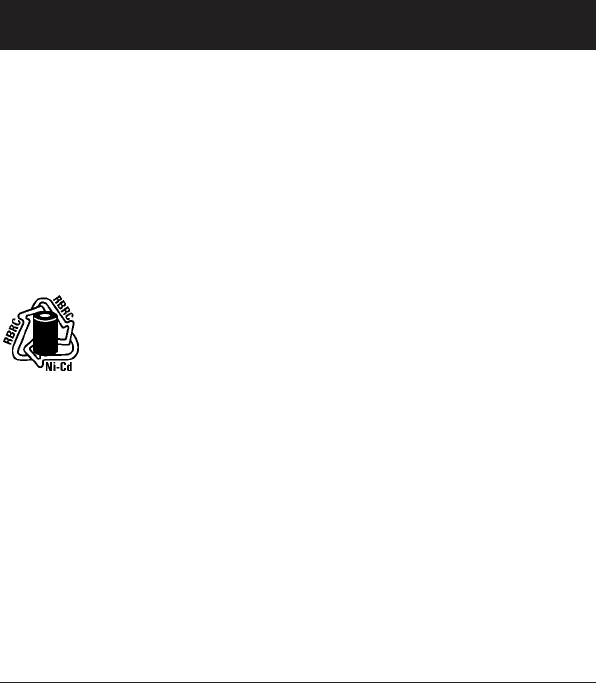
Important Safety Instructions
conductor may overheat and cause harm. Observe proper polarity
between the battery and the battery charger.
• Nickel-Cadmium Rechargeable Batteries: Must be recycled or
disposed of properly. Do not dispose of them in household garbage.
Do not burn or puncture. Like other batteries of this type, if burned
or punctured, they could release caustic material which could cause
injury.
The RBRC
™
Seal means that the manufacturer is voluntarily participating in an industry
program to collect and recycle Nickel-Cadmium rechargeable batteries when taken out
of service within the United States. These batteries may be taken to a participating local retailer of
replacement batteries or recycling center. Or you may call 1 800 8BATTERY for locations accepting
spent Nickel-Cadmium Batteries. Nickel-Metal Hydride Rechargeable Batteries: Dispose of these
batteries in a safe manner. Do not burn or puncture. Like other batteries of this type, if burned or punc-
tured, they could release caustic material which could cause injury.
• Nickel-Metal Hydride Rechargeable Batteries: Dispose of
these batteries in a safe manner. Do not burn or puncture. Like other
batteries of this type, if burned or punctured, they could release caus-
tic material which could cause injury.
Precautions for Users of Implanted Cardiac Pacemakers
Cardiac Pacemakers (applies only to 900 MHz Digital Cordless
Telephones):
Wireless Technology Research, LLC (WTR), an independent research
entity, led a multidisciplinary evaluation of the interference between por-
table wireless telephones and implanted cardiac pacemakers. Supported
by the U.S. Food and Drug Administration, WTR had recommended to
physicians that:
11


















